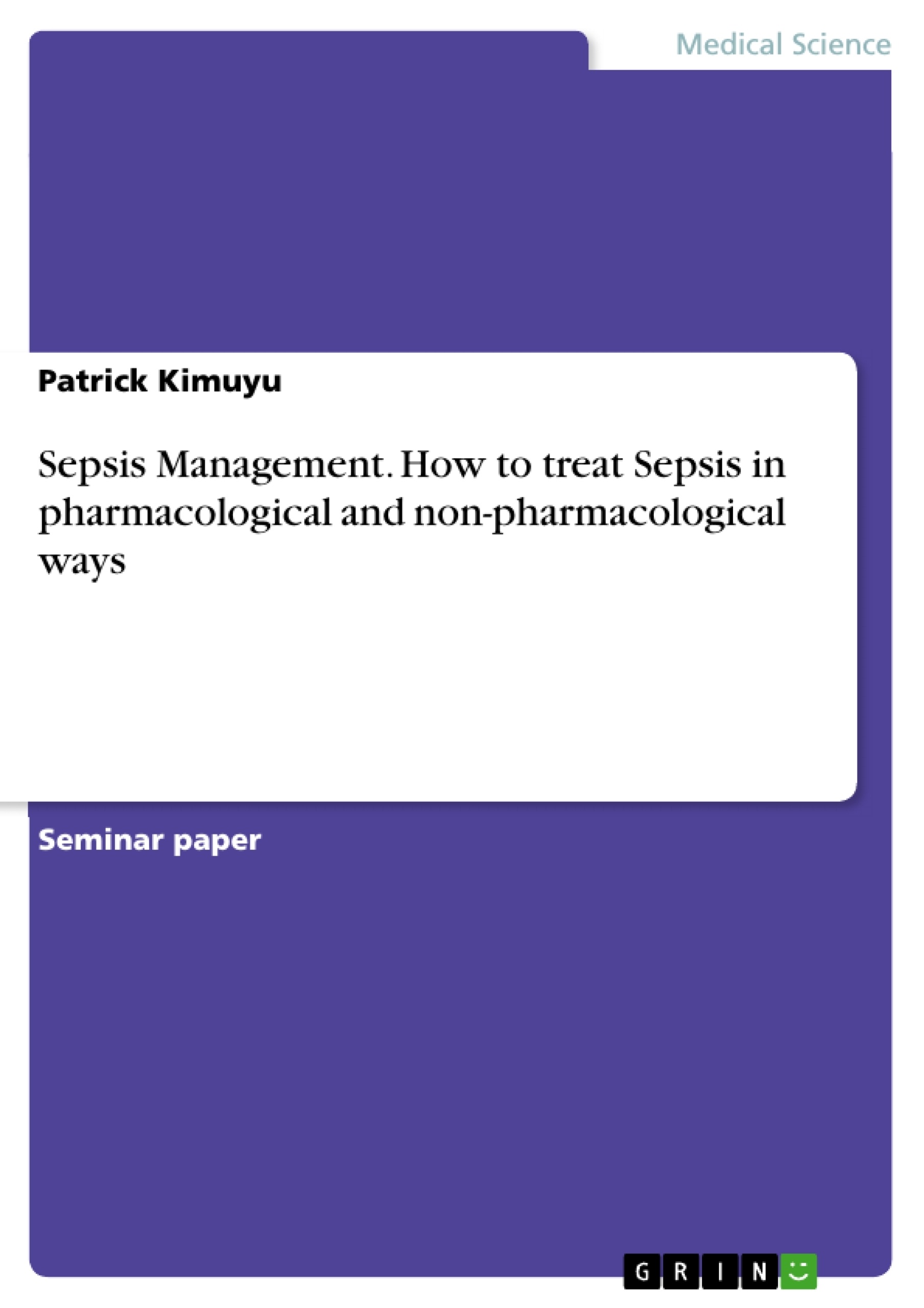Sepsis is believed to be one of the most life-threatening medical conditions. This condition is associated with an infection that triggers inflammation responses leading to inflammations in different body parts and organs. In most cases, bacterial infections serve as the causes of sepsis. In practice, sepsis can be viewed as a condition that occur in three stages with sepsis progressing into severe sepsis and then septic shock that is characterized by organ failure. Evidence indicates that incidences for severe sepsis and septic shock have increased rapidly in the past decade and this is attributable to the increase of the aging population. As a result, severe sepsis and septic shock are considered some of the most causes of mortality and morbidity in intensive care. This phenomenon has prompted physicians and professional societies to implement management procedures that focus on early intervention. Therefore, this presentation will provide a comprehensive discussion on pharmacological and non pharmacological treatment of sepsis.
INTRODUCTION
Sepsis is believed to be one of the most life-threatening medical conditions. This condition is associated with an infection that triggers inflammation responses leading to inflammations in different body parts and organs. In most cases, bacterial infections serve as the causes of sepsis. In practice, sepsis can be viewed as a condition that occur in three stages with sepsis progressing into severe sepsis and then septic shock that is characterized by organ failure. Evidence indicates that incidences for severe sepsis and septic shock have increased rapidly in the past decade and this is attributable to the increase of the aging population. As a result, severe sepsis and septic shock are considered some of the most causes of mortality and morbidity in intensive care (Claessens & Dhainaut, 2007). This phenomenon has prompted physicians and professional societies to implement management procedures that focus on early intervention. Therefore, this presentation will provide a comprehensive discussion on pharmacological and non pharmacological treatment of sepsis.
Objectives:
1. To create understanding on international sepsis management guidelines.
2. To create understanding on appropriate interventions in the management of sepsis.
3. To enable nurses to offer evidence-based practices and patient-centered care.
Prognosis of Sepsis
Prognosis of sepsis is based on systemic inflammatory response (SIRS) criteria. This implies that a patient should show at least two of the following signs and symptoms:
- Body temperature either low (<360 C or 96.8 F) or high (>380 C or 100.4 F)
- Elevated heart rate of more than 90 beats per minute
- Reduced PaCO2 in arterial blood or respiratory rate of more than 20 breaths per minute
- White blood cell count of <4,000 cells/µL or >12,000 cells/µL
On the other hand, severity of sepsis is evaluated by the use of the MEDS (Mortality in Emergency Department Sepsis) score (Davis & Stöppler, 2015).
PHARMACOLOGICAL AND NON PHARMACOLOGICAL TREATMENT OF SEPSIS
Sepsis is associated with life-threatening outcomes, especially multiple organ failure. Therefore, the rationales for sepsis treatment are: eradication of infection, restoration of perfusion and maintenance of adequate organ function. Therefore, the following interventions ensure the goals and principles of sepsis treatment are met, primarily in treatment of severe sepsis and septic shock.
EARLY MANAGEMENT
Respiration Support
Patients with sepsis require respiratory support to prevent encephalopathy. Therefore, respiration can is stabilized through the use of supplemental oxygen. Intubation and mechanical ventilation are recommended for patients with dyspnea, persistent hypotension and inadequate peripheral perfusion (Kalil, 2015).
Assessment of Perfusion
Adequacy of perfusion is assessed after the stabilization of respiration. Inadequate perfusion is indicated by hypotension and elevated lactate. Systolic blood pressure of <90 mmHg and mean arterial pressure of <70 mmHg are characteristics of hypotension, whereas elevated serum lactate above 2 mmol/L reveal organ hypoperfusion.
Establishment of Venous Access
For patients with suspected sepsis, either peripheral or central venous access is required. Venous access is used for initial resuscitation and infusion of medication, fluids and blood products during the course of treatment (Schmidt & Mandel, 2015).
Urinary Catheterization
Urinary catheterization is meant to monitor renal function. In practice, urine output serves as a marker for adequate cardiac output and renal function. Normal urine output ranges from 30 to 50 mL/hr in adults. This is equivalent to 0.5 mL/kg/hr (Dellinger et al., 2013).
Fluid Resuscitation
The rationale for fluid resuscitation is to restore perfusion. Patients with sepsis experience intravascular hypovolemia; thus fluid resuscitation with intravenous fluids, primarily crystalloids is required.
[...]
- Citar trabajo
- Patrick Kimuyu (Autor), 2018, Sepsis Management. How to treat Sepsis in pharmacological and non-pharmacological ways, Múnich, GRIN Verlag, https://www.grin.com/document/388557
-

-

-

-
¡Carge sus propios textos! Gane dinero y un iPhone X. -

-
¡Carge sus propios textos! Gane dinero y un iPhone X. -

-
¡Carge sus propios textos! Gane dinero y un iPhone X. -

-
¡Carge sus propios textos! Gane dinero y un iPhone X. -

-
¡Carge sus propios textos! Gane dinero y un iPhone X.

